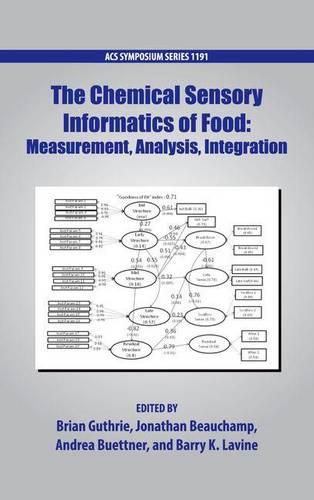Readings Newsletter
Become a Readings Member to make your shopping experience even easier.
Sign in or sign up for free!
You’re not far away from qualifying for FREE standard shipping within Australia
You’ve qualified for FREE standard shipping within Australia
The cart is loading…






Food chemicals provide a variety of information. They inform us of food safety, quality, authenticity, and origin, with direct links to our emotional responses in many cases. This information is key to our survival, whether to avoid disease or to find nutrients, and our enjoyment. Those involved with food production, processing and testing strive to better understand how food chemistry and oral processing provide information about food. Ideally, chemical analytical instrumentation and sensors could be developed to measure, analyze, and predict the chemical sensory information of food. While many research groups endeavor to develop such systems, recent research confirms that the information obtained by humans during food interaction and eating involve extremely complex interactions between the sensory stimuli and the information processes they invoke. Simple chemical analysis of the content of selected stimulants in food will likely not allow the prediction of the total information content that is desired. There is a longstanding need to better understand the generation of complex human sensations produced by food during eating and how they are integrated and translated into perceptions of food quality and safety.The goal of this book is to compile recent advances, research findings and approaches, and current knowledge across the different aligned areas of research, where experts from chemistry, instrumentation, data analytics and physiology, as well as behavioral and sensory sciences focused on these topics.
$9.00 standard shipping within Australia
FREE standard shipping within Australia for orders over $100.00
Express & International shipping calculated at checkout
Food chemicals provide a variety of information. They inform us of food safety, quality, authenticity, and origin, with direct links to our emotional responses in many cases. This information is key to our survival, whether to avoid disease or to find nutrients, and our enjoyment. Those involved with food production, processing and testing strive to better understand how food chemistry and oral processing provide information about food. Ideally, chemical analytical instrumentation and sensors could be developed to measure, analyze, and predict the chemical sensory information of food. While many research groups endeavor to develop such systems, recent research confirms that the information obtained by humans during food interaction and eating involve extremely complex interactions between the sensory stimuli and the information processes they invoke. Simple chemical analysis of the content of selected stimulants in food will likely not allow the prediction of the total information content that is desired. There is a longstanding need to better understand the generation of complex human sensations produced by food during eating and how they are integrated and translated into perceptions of food quality and safety.The goal of this book is to compile recent advances, research findings and approaches, and current knowledge across the different aligned areas of research, where experts from chemistry, instrumentation, data analytics and physiology, as well as behavioral and sensory sciences focused on these topics.